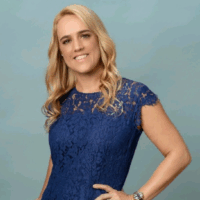Ericsson CEO Hints at Potential US Relocation for Global Growth

Ericsson US Relocation – The Telecom Giant’s Strategy to Expand Investments Outside Europe
Ericsson CEO Börje Ekholm has signaled a potential shift in the company’s headquarters from Sweden to the US. The telecom giant’s strategy to expand investments outside Europe reflects its focus on future growth in dynamic markets. Ekholm emphasized the need for European lawmakers to prioritize consolidation and reduce regulatory hurdles to remain competitive globally.
In an interview with Bloomberg, Ekholm stated that Europe’s lagging pace leaves the company with little choice but to direct growth efforts toward North America. He hinted that a move to the US is under consideration, stating, “Would we relocate at some point in time? That could well happen.” This strategic pivot underscores Ericsson’s commitment to long-term global competitiveness.
Ericsson US Relocation: A Recurring Consideration
Ekholm revealed that relocating to the US has been a recurring topic within the company. While Ericsson maintains deep European ties, Ekholm stressed the importance of adapting to a rapidly changing global market. He cited the need for strategic decisions to position the company for future success.
Competing with China Through Innovation
The CEO addressed challenges posed by competitors like Huawei, noting that US sanctions on the Chinese telecom giant have been largely ineffective. Ericsson aims to outperform rivals through significant research and development, with a focus on open RAN technology. This approach aligns with its vision of creating a “horizontal platform” to drive competition and innovation.
In the US, Ericsson has made substantial progress in open RAN, including a $14 billion contract with AT&T secured in 2023. Ekholm acknowledged that this approach might attract additional competition but reaffirmed its importance in the company’s strategy to stay ahead of Chinese rivals.
Network API Growth and Strategic Adjustments
Ekholm also highlighted the anticipated growth of Ericsson’s network API business. The company expects to generate revenue from this segment within the next two years. Its 2022 acquisition of Vonage Holdings for $6.2 billion marked a major push into API development, although subsequent market challenges led to significant write-downs.
Admitting missteps, Ekholm acknowledged that Ericsson “dropped the ball” on Vonage’s core operations but assured investors of a renewed focus on executing the business plan effectively.
Ericsson’s evolving strategies reflect its determination to adapt to shifting global dynamics. Whether through a potential US relocation, open RAN initiatives, or network API innovations, the company aims to secure its position as a leader in the competitive telecom sector.
Most Asked Question in the FAQ
4G LTE Cat-1bis modules are a type of wireless communication module designed for the LTE (Long-Term Evolution) network. They are an enhancement of the original Category 1 (Cat-1) LTE modules and offer some specific features and improvements. Here are the key aspects of 4G LTE Cat-1bis modules:
- Enhanced Data Rates: While standard Cat-1 modules support data rates up to 10 Mbps for download and 5 Mbps for upload, Cat-1bis modules are designed to provide improved data rates. The exact speeds can vary, but they are generally higher than the basic Cat-1 specifications.
- Power Efficiency: Cat-1bis modules are designed to be more power-efficient compared to their predecessors. This makes them suitable for IoT devices that require a balance between moderate data rate requirements and long battery life.
- Lower Complexity: These modules are less complex than higher category LTE modules (such as Cat-4 or Cat-6), which makes them a cost-effective solution for applications that do not require very high data rates.
- Applications: 4G LTE Cat-1bis modules are ideal for a range of IoT and M2M (Machine to Machine) applications that require better connectivity than 2G or 3G but do not necessarily need the high speeds offered by more advanced LTE categories. These include telematics, smart metering, security systems, remote monitoring, and other IoT applications.
- Backward Compatibility: Like other LTE technologies, Cat-1bis modules are typically backward compatible with existing 2G and 3G networks, ensuring connectivity even in areas where 4G coverage is not available.
- VoLTE Support: Some Cat-1bis modules support Voice over LTE (VoLTE), which can be a critical feature for certain applications that require voice communication capabilities.
In summary, 4G LTE Cat-1bis modules provide a balanced solution for IoT and M2M applications, offering enhanced data rates and power efficiency compared to standard Cat-1 LTE modules, without the complexity and cost of higher category LTE technologies.



































































